SEARCH






|
|
|
|


Pekka Järventaus is an accomplished photographer, passionate about African wildlife, particularly lions. His work, mainly black and white is extraordinary, due to his brilliant ability to capture the iconic presence of the majestic African lion along with the intriguing and unique social structures of the lion pride. . He is the man who prowls with those amazing animals more than anyone else. It was an enriching and learning experience to interview him.
Can you please introduce yourself and tell us what first attracted you to photography?
I'm originally from Gothenburg, Sweden. I have a background as a digital artist in the video game industry doing work in photoshop and 3D, so the artistic/creative part has always been a large part of my professional life. It has also given me the opportunity to live and work in many cities in Europe while giving me time to refine my artistic skills. While living in Paris I bought an entry level camera to learn photography. But it was first during an African safari a couple of years ago, that I discovered my real passion for photography and decided to start photographing lions.
One of the reasons why I got drawn to photography was that it's only your own creativity and ability to implement visions, that limits you. This compared to let's say video games development were projects can take 3-4 years and includes 100+ people, you are now suddenly depending on and juggling many aspects, just like in any large scale project. Photography simply offered me the ability to perform at my highest individual level with no restrictions or compromises. But most importantly it has giving me the opportunity to meet great lions and prowl with them.
Why are you so fascinated by lions, Pekka?
I have always been interested in lions. You see lions in movies, read about them in books, they are being used as logos etc. Lions are all around us. They are true symbols of royalty and power.
Most of us get to see a lion in the zoo but it is not the same as seeing a lion in their natural habitat. I think it is easy for us to relate to lions to some extent since they live in prides very similar to how we live in families. There is a brother/sisterhood among lions that we also can relate to. These social structures also make lions unique among the big cats. These are also some of my reasons why I like them so much.
How safe is it to photograph wild lions?
A lot of people have asked me if it is dangerous. Personally I have never felt threatened. Most wild animals do not know what you are. They evaluate you based on your actions. When you are inside the car lions view you and the car as one large entity. They know that the car is large and smells bad and that it is not something they can eat. The lions understand silhouette more than depth, so the car is working as your ‘invisibility cloak’ – as long as you are within the car and remain quiet and don’t move too much, they will not bother you. If you would take one step out of the car the cloak would not work and the situation would change very quickly into something dramatic, and you would most likely end up being their ‘free lunch'.
By following the above precautions, I find it to be very safe and rewarding. I love being around lions and photographing them. I feel that I’m part of something that is bigger than me and that I’m truly blessed getting a glimpse into the life of these great creatures. Being around these amazing animals in their natural kingdom is a truly remarkable experience.
Your work is mainly black and white. That is unusual for wildlife photography. Can you tell us why?
I have never been interested in documenting lions. There are plenty of photographers that already do so. Instead I'm interested in going beyond traditional wildlife photography and inject my own artistic vision into my images. I want to capture those majestic qualities that speak to me the most and create iconic portraits of lions.
Black and white photography is for me the medium that has the most impact, especially in portraiture, and I felt early on that my lion portraits were more engaging without the distraction of color. Just shape, light, shadow and that timeless feel of monochrome photography.
Can you tell us a bit more about your photographic vision?
I only photograph lions in the wild. I want to create portraits that tell a story. Lions in zoo's or in any other environment simply don't have the magical qualities and the presence that I look for. I also spend quite some time looking for the right lion to photograph. So even when I find a lion in the wild, it doesn't necessarily mean that I will photograph it. As with portrait photography of people, I wouldn't just go out and start photographing the first person I see on the streets. Instead I look for something extraordinary that has a majestic presence.
The majority of my work is photographed in Masai Mara, Kenya. The kingdom of lions. The Mara is well known for its large lion population and also offers magnificent vistas and varied areas for photography, from the short grass and marshes in the north to the mountain ranges and tall grass in the south. I also prefer to photograph during rainy or stormy weather conditions. It adds a bit of drama to the scenes that I like.
What is more important to you, the story behind your images or the technical perfection?
I find the story, the subject and the desire to create an emotional connection with the viewer to be far more important than technical perfection. The same applies to questions about what type or brand of camera to use. Let’s say I would take a photo of my breakfast with a canon 1DX, the subject itself is not that interesting and the use of a high end camera will not really add much value to the image. If you on the other hand would take a photo of Barack Obama and Vladimir Putin standing next to an UFO in Central Park, shaking hands with space aliens. Such a photo would be of such high interest, it would sell for millions to magazines, regardless of the camera brand or technical perfection.
What gear do you use and which software do you prefer when processing your images?
I use two Canon 1Ds Mark II bodies. One of them is equipped with a Canon 300mm f2.8, and the second one is normally equipped with a Canon 70-200mm f2.8. I don't spend much money on gear to be honest. I'd rather spend the money on opportunities to photograph in Africa, than on a lot of camera gear. All my gear is second hand. Depending on the situation I also tend to use either bean bags or mono-pods to stabilize my lenses.
In terms of software, I use light room and PS. However I never remove anything in the image so I don’t do any ‘creative edits.’ I simply enhance certain areas to get a certain aesthetic look. Mostly dodging, burning and some vignetting.
Can you tell us something about your work flow?
I am not a person that likes to improvise so the 'Just go there and do stuff to see what happens approach' does not fit me at all and it wouldn’t be possible with the fixed short time frame I work with. Instead, I prefer to think first, then plan, and finally execute it. So even when working with wild lions who I can’t direct, I try to think of this as a conceptual process.
Since I’m doing this on my own and I don’t have a big budget, I need to capitalize on my opportunities and stack the odds in my favor. Nat Geo or any of those guys can spend 10 months in the field at a time while I spend 5 weeks a year. Traveling in Africa is expensive so I want to get as much out of the trip as possible.
How do you plan and prepare your trips to get the most out of them?
First and foremost I try to limit the number of concepts that I want to realize in one trip. Africa is an awesome place for photography and there is so much stuff to see there. Unfortunately, I cannot photograph everything it has to offer and especially not in a few weeks so I try to limit it based on location. I want for example photograph lions on rocks, I will do most of my sessions in the south area of Masai Mara that happen to offer both rocky mountain areas and lion prides. I will also find a camp that is located in the south area to avoid wasting time and opportunities by driving too much.
If I'm interested in photographing portraits of female lions I would travel to a large pride with a large female population. That would give me the opportunity to find the lionesses that I think fit and have the qualities that I look for. It is almost like a casting session. It has worked great so far.
But before I travel to Africa. I try to visualize the trip and the potential photographic scenarios that might occur. Where do I want to position myself if I see a lion standing on a rock in front of me? What distance do I want to shoot from? What lens would I use? Do I want the lion back lit or lit from the side? I try to have a concept, as clear as possible, on how I want the image to look like and what I might actually encounter. Then I try to meet somewhere in the middle. And in most cases it works. When I photographed ”Lioness on the rocks” in the Serengeti in Tanzania,my concept was to photograph a lion on the rocky hillsides and I especially wanted a photograph including the unusual round rocks that are common in the Serengeti to be dominant in the image. I was driving around in circles around the rocky areas looking for opportunities. When I found the lioness on the rock I recognized the opportunity and took the shot. She got up, looked at me, I photographed 2-3 more shots and she walked away. The entire session lasted maybe 5-10 seconds.
Having already thought out the idea and planned it in my head really helped me take that photograph.
I also draw thumbnail sketches on a pieces of paper and write down a photo script or a wish list of what kind of photos I look for, and by the time I get to Kenya it is all about execution. I simply work my way down the list. Having all these scenarios and concepts worked out before traveling really helps me getting the most out of my trips.
What is your most memorable photo experience?
That would be my first safari trip and the first time I saw a lion in the wild. Bush camps in Tanzania and Kenya do not have any protective fencing around them so you are really sleeping and living among wild animals. Hearing all the noises of hyenas and other animals passing through the camp, not to mention hearing lions roaring in the distance, having all those sounds coming through the thin tent canvas while lying in your bed at night. It is a true African bush experience and an adventure on its own.
While being on Safari you tend to spend your days driving around the savanna looking for animals and photographing them. It is normally referred to as game drives.
Game drives are done mostly in the early morning and afternoon to evenings.
This was my first early morning game drive in the Serengeti, Tanzania. My camp was located in the heart of the Serengeti and close to numerous lion pride territories.
There is a very special feel that goes through your body when you are up at 6 am before sunrise, unzipping the tent and staring out into the quiet darkness while sweeping with your flash light over the tall grass, hoping you won’t see the glowing reflection of two eyes looking back at you. You just know at that particular moment that you are potential prey in the kingdom of lions.
We had been driving for maybe 15-20 minutes and I was still not yet fully awake when my driver said: Lion! The four wheel drive stopped and I picked up my camera while looking through the windshield, expecting to see a lion sitting on the road ahead of us but no lion in sight. Instead I heard something breathing heavily to the left of me. I turned my head and about 4-5 meter away from my open passenger window, I saw a great male lion sitting in the grass, looking at me with his large yellow glowing eyes. His head with the impressive mane looked so huge, that just by appearance, it looked as if he wouldn't be able to fit his head through the passenger window even if he wanted to. And for a while we were just sitting there in silence, looking at each other. In the early sunrise, the golden light gave him an orange look and his mane looked like it was on fire. Whenever he was breathing it looked like smoke coming out from his nostrils. He was truly an iconic king. I remember that I was thinking: Wow! Hey, this is so awesome. What a great Monday morning. I haven’t even had breakfast yet. It's 6:30 in the morning and I have already seen my first lion in the wild. What an experience! Then I reached for my camera again and started to photograph him. That lion encounter was also the turning point, is was at that moment that I decided to focus exclusively on lions and take my photography more seriously.
Do you photograph on your own?
Yes, like most creative people, I strive for solitude when creating. With all due respect for teamwork and collaboration, photography and creativity to me are a personal experience and expression. I need silence when I'm working. I need to be in a state of my 'true self'. I think it was the great Pablo Picasso who once said: “Without great solitude no serious work is possible.” I couldn't agree more.
I feel that the isolation from other influences and distractions helps me hear my own voice, gather my thoughts and it gives me a space to create.
That is one of my reasons why I have my own private car and driver just for that purpose. It doesn't fit me at all to be in a shared safari vehicle with random people having different interests and ambitions.
What is your most important advice to a beginner in wildlife photography and how do you get started?
Don't spend too much money on gear. Get a good all around camera first until you know for sure what you like to photograph. Buy second hand, it's cheaper that way. Try to buy lenses if you need to buy something, they retain value longer than camera bodies. It is also better to spend money on proper photo trips if you have special interests. For example, in my case: lions. The things you get to see on a one week safari is a lot more inspiring than lets say a zoo visit on a Sunday afternoon. You also practice consistently for several hours a day, several days in a row and that will provide results quicker.
But the main advice would be to photograph the things that you are passionate about. It is easier to gain momentum and see progress if you are motivated and pulled by something that is bigger than you, something that you feel for, instead of trying to push yourself doing things that you're only half invested in. You can’t do anything great without passion. It's universal. It doesn't just apply to photography.
Who are your favorite photographers that inspire you the most?
In terms of portraiture, Richard Avedon is a clear favorite and Gregory Colbert for his unique take on nature photography. In terms of traditional wildlife photography, I would say fellow Swede Mattias Klum. He took some outstanding portraits of Asiatic lions a few years back that really inspired me. He has also given some really great talks on behalf of National Geographic. If you haven't seen them, they are definitely worth to check out. You find them on YouTube etc. But in terms on inspiring photographers here on 1X I would say, Wolf Ademeit, Morkel Erasmus, Antje Wenner and many more. Plenty of inspiration here.
Describe your favorite photograph taken by you and why it is special to you?
I have a few but most of the ones that I like, I like because of the moment when I captured them, for example ‘Cub Life’ – the cub and the sleeping lioness. I spent three days with this lioness and cub so I could get really close and I really enjoyed spending time with them. That little cub was just hilarious. He was a true next generation prowler.
Are there any specific directions that you would like to take your photography in the future or any specific goals that you wish to achieve?
I recently signed a sales representative contract in Seoul, South Korea and I also got a gallery contract with an art gallery in Barcelona, Spain. Getting a gallery contract is for most photographers and artists a large and important milestone, so naturally I am super excited about it. As a next step I'm hoping to attract some more attention from galleries and to win a few more awards. Hopefully this will help me to get the revenues that I need to conduct more complex and larger photo expeditions in the future.
On a higher level, I want to continue to find new ways to take engaging portraits of lions, find new ways to evolve as a photographer and I want to be able to see my lion project as a tribute to the few brave lions that still prowl the African plains.
There may be less than 20,000 wild lions left in Africa. If you compare it to the late 40s when there were more than 450,000 lions, the future for lions does not look too bright, unfortunately.
Hopefully, my photography and view of lions will serve as an inspiration for a future with wild, healthy lions still roaming the great plains. We all live under the same sky and they have the same right to life as we do, and I'm sure most people would agree with me that our planet would be very boring and a dull place without these majestic prowlers.
I'm taking this opportunity to announce that the results of the prestigious ND-AWARDS 2015 were published yesterday. Pekka Järventaus won the 1st price in the category Nature - Wildlife.
Congratulations, Pekka !!!
Winning image ND-Awards 2015, 1st Price in category Nature-Wildlife by Pekka Järventaus
 | Write |
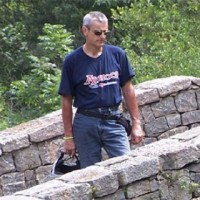 | beppeverge Very interesting interview, Mamy thanks to Pekka and Yvette. |
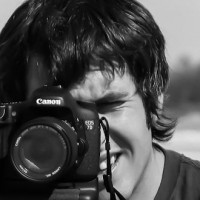 | Jaco Marx PRO Nice one Pekka! |
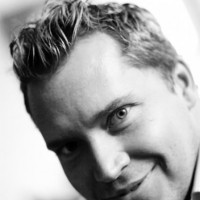 | Pekka Järventaus Thanks a lot Jaco Marx! |
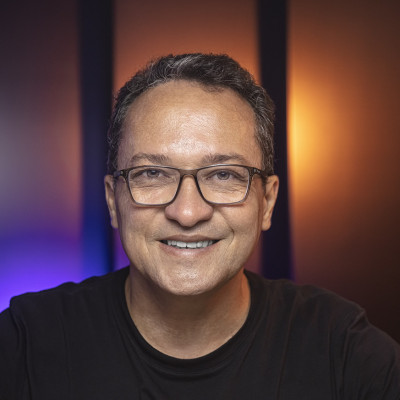 | Jackson Carvalho I loved your work, and for me is a reference and inspirational. Congrats and best regards |
 | Yvette Depaepe CREW Congratulations to you for your winning images and honorable mentions in the ND Awards too, dear Jackson. Cheers, Yvette |
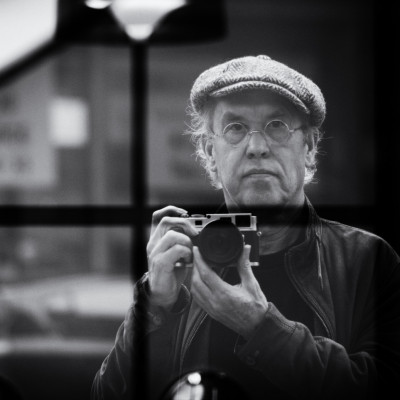 | Hans Martin Doelz CREW I join Yvette to congratulate on your great success in The ND Awards 2015. Cheers, Hans-Martin |
 | Pekka Järventaus Thanks and likewise Jackson Carvalho!
|
 | Jackson Carvalho Thanks Pekka Jarventaus |
 | Yvette Depaepe CREW Dear Pekka ... It was a real pleasure to interview you. My admiration for your work is endless now. I also like to congratulate you with the 1st price in the ND-Awards 2015. I hope that you don't mind that I added the winning image at the end of the interview. Congratulations in the name of the entire 1x community, dear friend. Cheers, Yvette |
 | Pekka Järventaus Thank you for your kind comments Yvette. Had a great time doing the interview as well. It's a great honor being featured at 1x among so many outstanding talents.
|
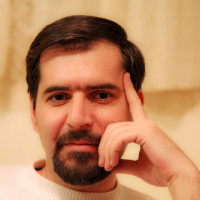 | Mohammad Soheilinia In this series of images natural life milk can be seen in the natural environment and it is noteworthy that even the photographer with great care, especially if they are the body's natural beauty has taken,
Thanks to all and BRAVO! |
 | Pekka Järventaus Thank you! |
 | Hans Martin Doelz CREW Fantastic images, informative interview. Many thanks to Yvette and Pekka. And my sincere congrats to Pekka on winning the gold star award in the category nature - wildlife of the prestigious ND-Awards 2015 which results were published yesterday. Cheers, Hans-Martin |
 | Yvette Depaepe CREW Thank you so much for mentionning Pekka as a winner in the ND-Awards 2015, Hans Martin.
I added it at the end of the interview ;-) Great that the news came together with the publication of Pekka's interview. |
 | Pekka Järventaus Thank you Hans Martin Doelz! Lots of inspiration in the ND Awards. |
 | Yvette Depaepe CREW Congratulations on your winning image and honorable mentions in the ND Awards, dear Hans Martin. 1X is proud to see several members between the winners and honorable mentions. Cheers, Yvette
|
 | Hans Martin Doelz CREW Many thanks, Yvette. Many breathtaking images can be seen there. I'm proud of this great success and will further try to improve my skills in photography. Cheers, Hans-Martin |